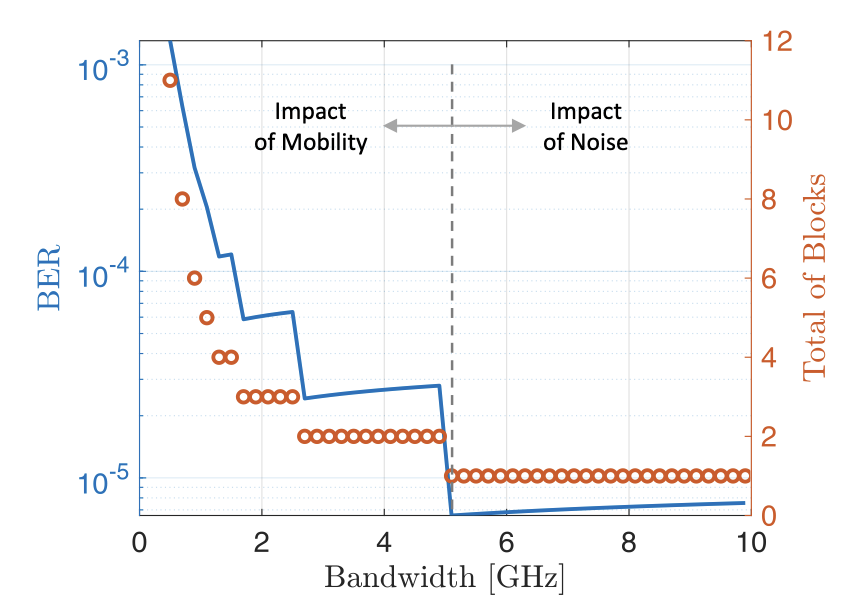Literature Database Entry
chen2005simulation
Feng Chen, "Simulation of Wireless Sensor Nodes Using S-MAC," Master's Thesis, Department of Computer Science, Friedrich–Alexander University of Erlangen–Nuremberg (FAU), September 2005. (Advisors: Armin Heindl and Falko Dressler)
Abstract
S-MAC, a new MAC protocol designed for wireless sensor networks, has been proposed and developed lately. The primary design goal for S-MAC is to achieve energy efficiency and self-configuration on wireless sensor nodes. The main features of S-MAC include periodic sleep for reducing energy wasted on idle listening and overhear avoidance for further energy savings, message passing for transmitting long messages in order to decrease latency along with energy consumption, and adaptive listening for improving latency in multi-hop transmission. S-MAC has been implemented in both TinyOS on the Mote platform and in ns-2, the network simulator. Several papers have introduced the basic idea of S-MAC. However, there are still very few documents about its internal implementation. One task of this thesis is to reveal how S-MAC works internally by investigating its source code in ns-2. Meanwhile, some bugs in the S-MAC source code have been fixed. To evaluate the long-run performance of S-MAC and reveal the fundamental tradeoffs of energy, latency and throughput in S-MAC, we run a large number of steady-state simulations using various traffic sources with ns-2. In addition, several simulations have been run to reproduce the results from measurements on Mote hardware.
Quick access
Contact
BibTeX reference
@phdthesis{chen2005simulation,
author = {Chen, Feng},
title = {{Simulation of Wireless Sensor Nodes Using S-MAC}},
advisor = {Heindl, Armin and Dressler, Falko},
institution = {Department of Computer Science},
location = {Erlangen, Germany},
month = {9},
school = {Friedrich--Alexander University of Erlangen--Nuremberg (FAU)},
type = {Master's Thesis},
year = {2005},
}
Copyright notice
Links to final or draft versions of papers are presented here to ensure timely dissemination of scholarly and technical work. Copyright and all rights therein are retained by authors or by other copyright holders. All persons copying this information are expected to adhere to the terms and constraints invoked by each author's copyright. In most cases, these works may not be reposted or distributed for commercial purposes without the explicit permission of the copyright holder.
The following applies to all papers listed above that have IEEE copyrights: Personal use of this material is permitted. However, permission to reprint/republish this material for advertising or promotional purposes or for creating new collective works for resale or redistribution to servers or lists, or to reuse any copyrighted component of this work in other works must be obtained from the IEEE.
The following applies to all papers listed above that are in submission to IEEE conference/workshop proceedings or journals: This work has been submitted to the IEEE for possible publication. Copyright may be transferred without notice, after which this version may no longer be accessible.
The following applies to all papers listed above that have ACM copyrights: ACM COPYRIGHT NOTICE. Permission to make digital or hard copies of part or all of this work for personal or classroom use is granted without fee provided that copies are not made or distributed for profit or commercial advantage and that copies bear this notice and the full citation on the first page. Copyrights for components of this work owned by others than ACM must be honored. Abstracting with credit is permitted. To copy otherwise, to republish, to post on servers, or to redistribute to lists, requires prior specific permission and/or a fee. Request permissions from Publications Dept., ACM, Inc., fax +1 (212) 869-0481, or permissions@acm.org.
The following applies to all SpringerLink papers listed above that have Springer Science+Business Media copyrights: The original publication is available at www.springerlink.com.
This page was automatically generated using BibDB and bib2web.

